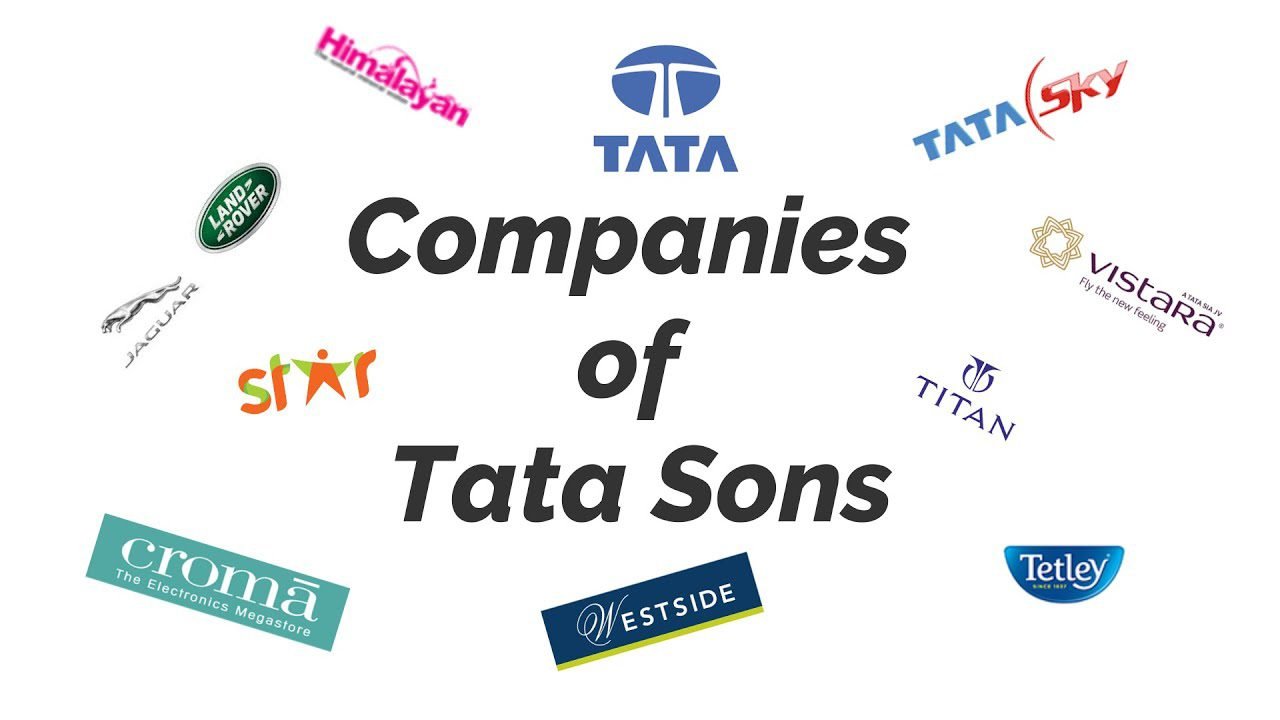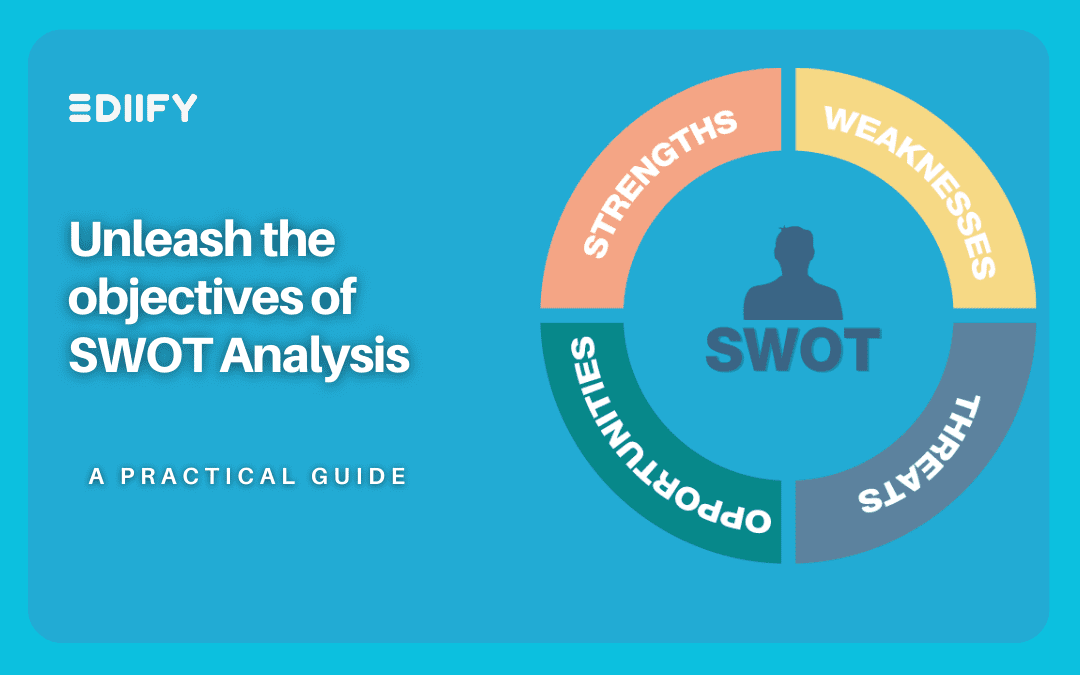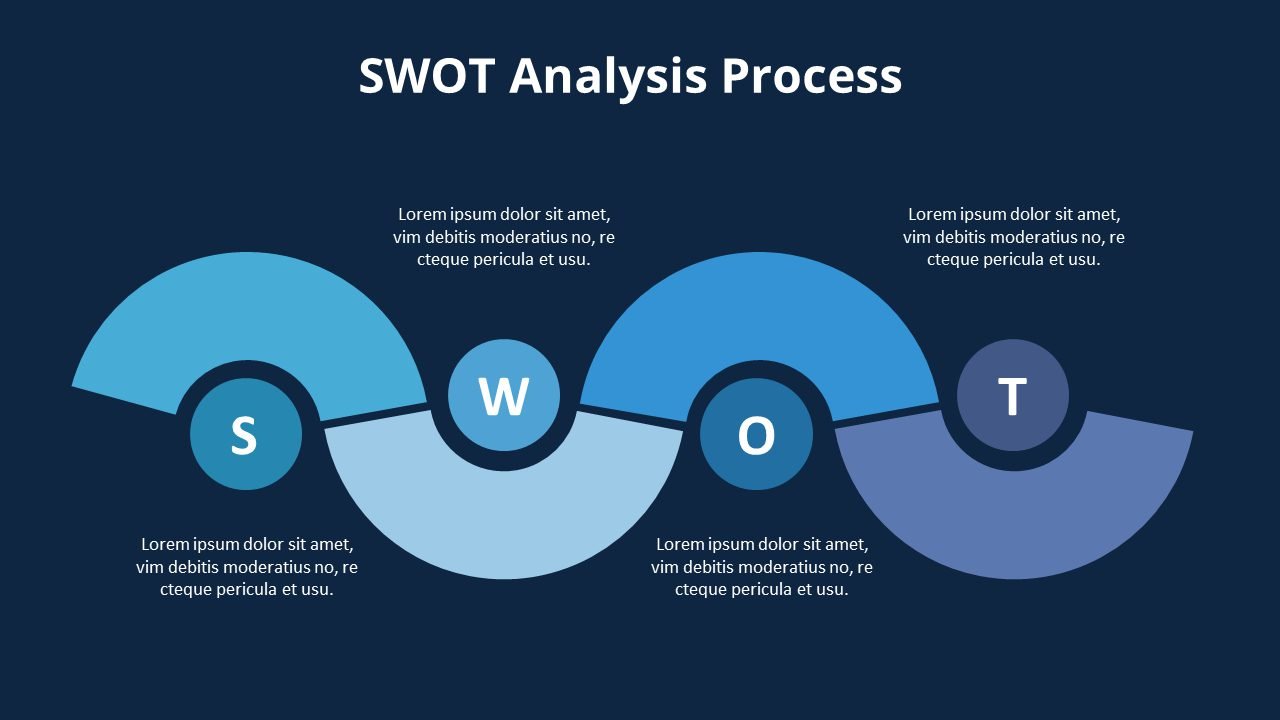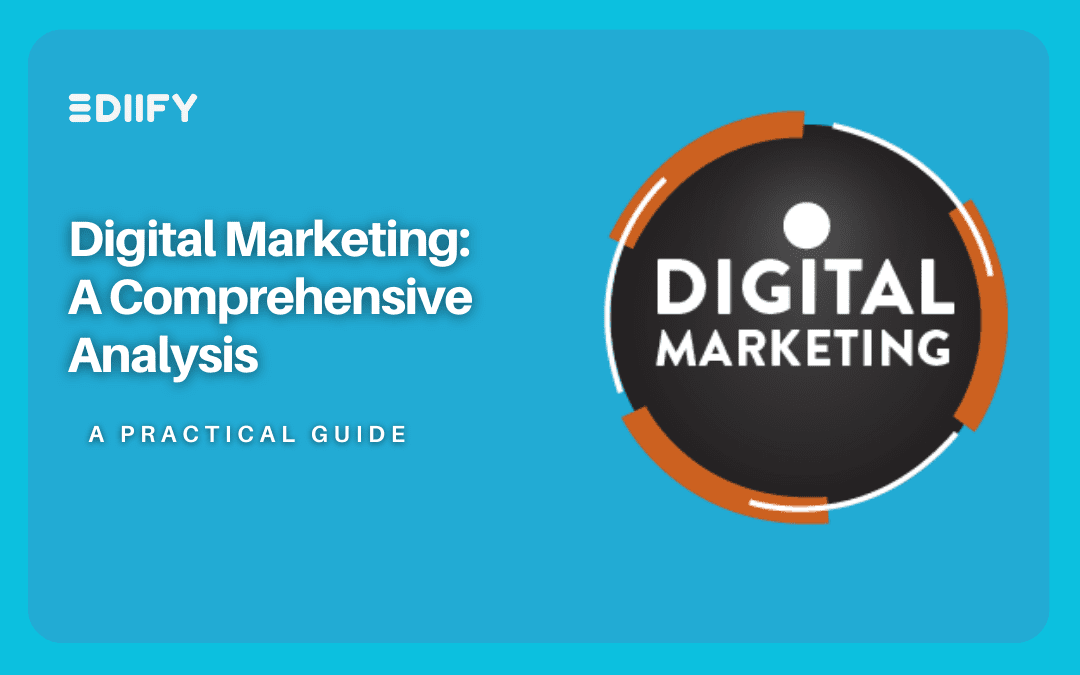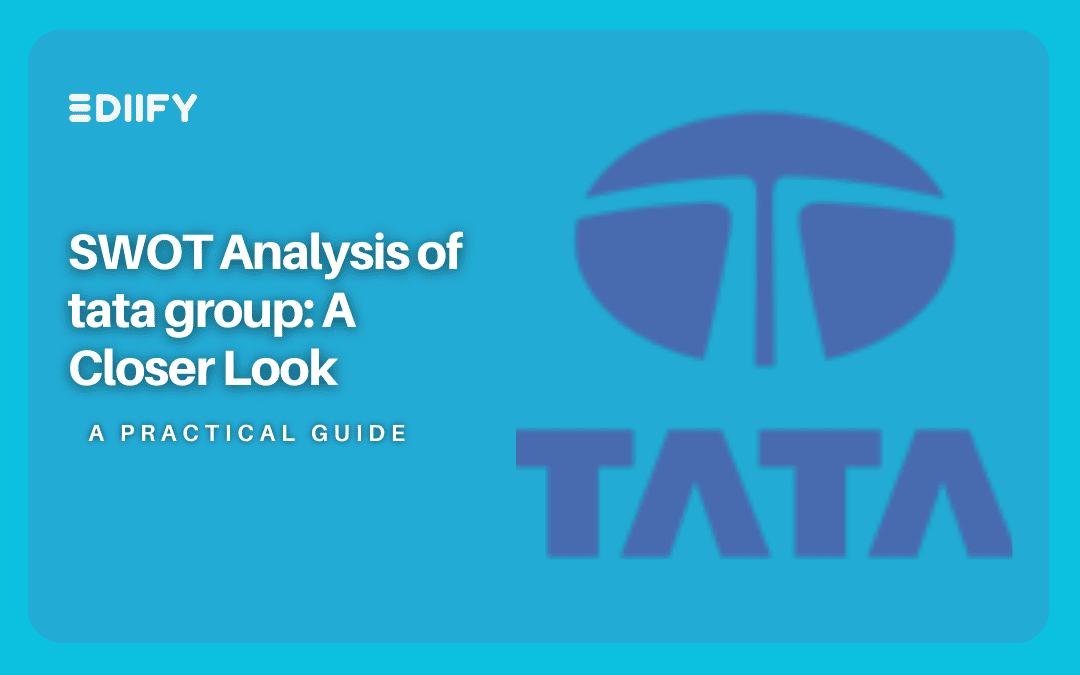
SWOT Analysis of tata group: A Closer Look
Jan 20, 2024 | EDIIFY Blogs
Introduction:
In the dynamic landscape of global business, strategic planning emerges as a critical determinant of a conglomerate’s success and sustainability. Tata Group, established in 1868, stands as a testament to resilience and adaptability, boasting diverse interests ranging from steel and automobiles to information technology and hospitality. This analysis aims to provide a nuanced understanding of Tata Group’s strategic positioning through a thorough examination of its swot analysis of tata group.

Strengths:
- Diversified Portfolio: Tata Group’s strength lies in its diversified business portfolio, spanning sectors like steel, automotive, information technology, telecommunications, and hospitality. This diversification serves as a buffer against industry-specific downturns.
- Global Presence: With operations in over 100 countries, Tata Group boasts a robust international presence. This global footprint exposes the group to diverse markets, enhancing resilience against regional economic fluctuations.
- Innovation and Research: Tata Group maintains a strong focus on innovation and research, leading to groundbreaking developments in the automotive and technology sectors. This commitment to technological advancements positions the group competitively.
Take a look at the below blog The Tata Motors an in-depth analysis
https://ediify.com/tata-motors-an-in-depth-analysis/
Weaknesses:
- Complex Organizational Structure: The vast and complex organizational structure of Tata Group poses challenges in decision-making and communication. The conglomerate’s size may result in bureaucratic hurdles, potentially slowing down responsiveness to market changes.
- Dependency on Specific Markets: Despite a global presence, Tata Group heavily relies on specific markets for revenue. Economic uncertainties or geopolitical tensions in these regions can impact the group’s overall performance.
- Brand Perception Challenges: In certain sectors, Tata brand faces challenges in perception, especially in the highly competitive consumer market. Addressing and reshaping these perceptions is crucial for sustained success.
Take a view on the below blog the competitors of Mahindra and Mahindra
https://ediify.com/project/competitors-of-mahindra-and-mahindra-a-journey-through-time/
Opportunities:
- E-Mobility and Sustainable Initiatives: The global shift towards sustainable practices presents a significant opportunity for Tata Group to capitalize on the growing demand for electric vehicles and eco-friendly technologies.
- Digital Transformation: The increasing importance of digitalization creates opportunities for Tata Group, particularly in the information technology sector. Embracing digital transformation can position the group as a leader in this rapidly evolving landscape.
- Strategic Collaborations: Exploring collaborations with global players can provide Tata Group access to new markets, technologies, and resources. Joint ventures and partnerships can be leveraged to drive growth and innovation.
Take a look at the below blog the competitor of Maruti Suzuki
https://ediify.com/project/the-competitors-of-maruti-suzuki-a-closer-look/
Threats:
- Economic Volatility: The global economic landscape’s volatility poses a threat, with economic downturns impacting consumer spending across various sectors, affecting Tata Group’s financial performance.
- Intense Competition: Intense competition, both domestically and internationally, threatens Tata Group’s market share. Staying ahead in innovation and efficiency is crucial to counter challenges posed by aggressive competitors.
- Regulatory Challenges: Changes in regulatory frameworks, trade policies, or geopolitical tensions can present challenges for Tata Group’s operations in different regions. Adapting to evolving regulatory environments is essential to mitigating these threats.
Take a view at the below blog the competitors of reliance industries
https://ediify.com/project/the-competitors-of-reliance-industries/
Conclusion:
In conclusion, the swot analysis of Tata Group reveals a conglomerate with substantial strengths and opportunities, balanced by acknowledged weaknesses and threats. Leveraging its diversified portfolio, global presence, and commitment to innovation will allow Tata Group to navigate challenges and capitalize on emerging trends. Addressing organizational complexities, reshaping brand perceptions, and strategically embracing opportunities are critical aspects for sustained success in an ever-evolving global business landscape. A proactive approach to its SWOT analysis will be instrumental as Tata Group continues to evolve, shaping a resilient and dynamic future.
